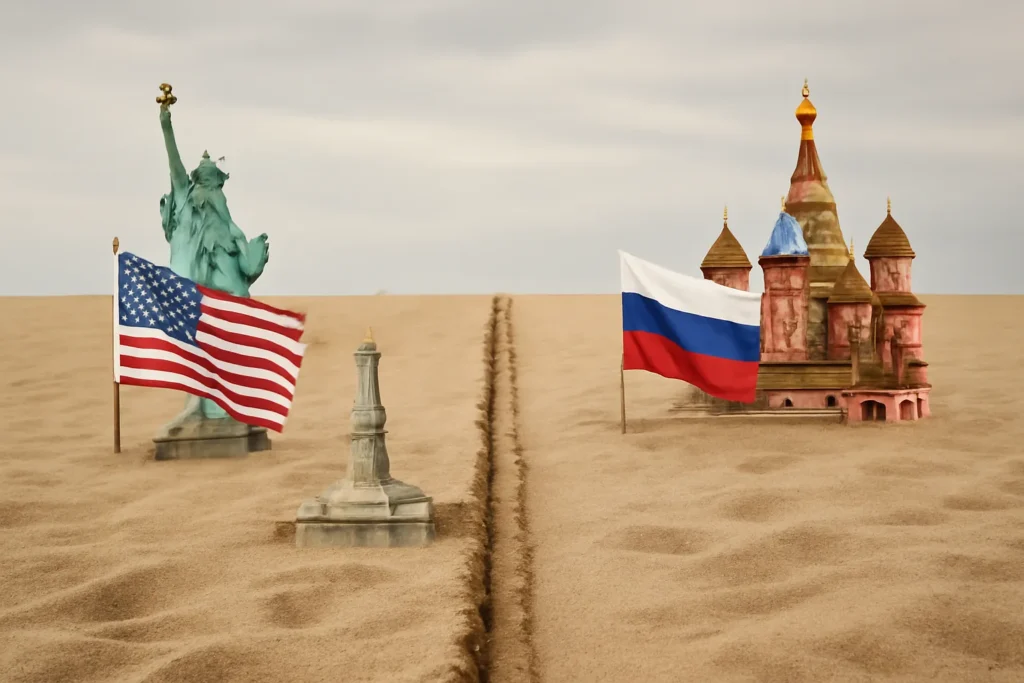U.S. Patience Runs Thin on Ukraine Talks
Three years into Europe’s most harrowing conflict since World War II, U.S. Vice President JD Vance captured headlines and global attention with a stark admonition for the Kremlin: Russia is “asking for too much” in its pursuit of peace with Ukraine. At the Munich Leaders Meeting in Washington, Vance’s words carried the weight of mounting frustration inside the Trump White House—a palpable shift from earlier diplomatic attempts that prioritized endless engagement over hard limits.
Behind the scenes, President Trump’s hand-picked envoy, Steve Witkoff, has shuttled between capitals for four marathon rounds of direct talks with Vladimir Putin. The results? According to those close to the negotiations and public remarks by Vance, “concrete concessions” from Moscow remain nonexistent. Each round seems to end where it began: with the Russian side refusing to back away from maximalist demands for sovereignty over Crimea, sweeping regional control, and a forced rollback of Ukraine’s NATO ambitions. For Kyiv and its supporters, these are simply intolerable asks. History reminds us that appeasement in the face of such aggression can be catastrophic—think back to the failed promises in Munich eighty-five years ago and the disastrous consequences that followed.
Vance’s recent comments mark perhaps the most pointed rebuke of Russian policy from any Trump administration official since the 47th president took office. This new posture comes after Ukraine, under immense pressure, signaled willingness to accept a brief 30-day ceasefire. Yet even this humanitarian olive branch was rebuffed by Moscow, which cited “strategic interests.” In the eyes of the White House, the Kremlin’s position leaves the U.S. with a dwindling set of diplomatic cards.
What Does ‘Asking for Too Much’ Really Mean?
A closer look reveals Russia’s negotiation checklist goes well beyond acceptable or realistic norms, effectively demanding Ukraine’s capitulation. According to reporting from inside the talks, Russia’s wish list includes internationally recognized sovereignty over Ukrainian lands seized since 2014, guaranteed demilitarization of border regions, legislative restrictions on Ukrainian cultural and religious life, and a perpetual ban from joining NATO or hosting Western troops. This agenda barely masquerades as a peace offer—it’s a blueprint for Ukrainian subjugation.
Experts such as Fiona Hill, former National Security Council senior director for Russia, emphasize that “peace settlements that reward aggression are temporary at best and dangerous at worst.” She argues that giving in to such sweeping demands would not only undermine Ukraine’s sovereignty, but also embolden autocrats everywhere. Those who remember the lessons of history know that “peace without justice is no peace at all.”
For progressive observers, the issue isn’t just what Russia is demanding—it’s what America and its allies are willing to signal in response. The durability of the postwar international order hinges on whether Western democracies stand up to coercive revisionism or allow power politics to redraw borders yet again. Across Europe, many are rattled by what’s at stake. Former U.S. Ambassador to NATO Ivo Daalder warns, “If the U.S. backs away, the future of NATO and transatlantic unity could fracture.” In fact, Wolfgang Ischinger, longtime German diplomat and current Security Conference president, has sounded alarm bells over the mounting risk that a deal without U.S. involvement could be “the de facto end of NATO as we know it.”
“Peace settlements that reward aggression are temporary at best and dangerous at worst.” — Fiona Hill
Conservatives who champion an “America First” approach are now paradoxically cornered by Moscow’s zero-sum strategy. Vance, who aligns closely with the Trump administration’s reframed priorities, has called for greater European defense spending and autonomy while warning privately that U.S. patience is not limitless. This echoes decades of American pressure for transatlantic partners to pull their weight—a refrain that is suddenly urgent and consequential.
Can Talks Survive—or Is Mediation on the Brink?
Time is running out. With Russia unmoved by proposals, and Ukraine unable (and unwilling) to cede vital territory or agency, the U.S. negotiators now float an ultimatum: make meaningful progress toward basic guidelines, or Washington steps back from its intermediary role. According to Vance, direct talks between Moscow and Kyiv are not just preferable—they’re essential. “We are not going to mediate endlessly while one party refuses to budge,” he said, suggesting a rare but critical shift in American patience.
Beyond that, European capitals worry aloud about being left exposed. Already, Eastern European neighbors—Poland, the Baltics, and Scandinavia—are beefing up their defenses. NATO’s principle of collective security is feeling its “stress test” in real time. Mushy, drawn-out negotiations are no longer tenable as Russian forces consolidate their grip and hope for Western fragmentation. Ukrainians continue to pay the price: families displaced, cities shattered, an entire generation marked by the trauma of war.
What is the way forward for justice and durable peace? The Biden years prioritized robust American leadership, persuaded allies to act in concert, and set clear moral red lines. The contrast with the Trump-Vance approach—less patience, more transactional—could not be starker. Yet, both sides now see that Moscow may only interpret flexibility as weakness. Harvard historian Serhii Plokhy notes, “When the West demonstrates resolve, it sets limits on further escalation.”
Americans watching these developments should consider the precedent being set. Will we stand for a peace that rewards land-grabbing and coercion? Or, as Vance’s recent shift implies, is there finally a shared recognition—however belated—that appeasement is not diplomacy? With the future of Ukraine in the balance, the world needs an answer, and soon.

